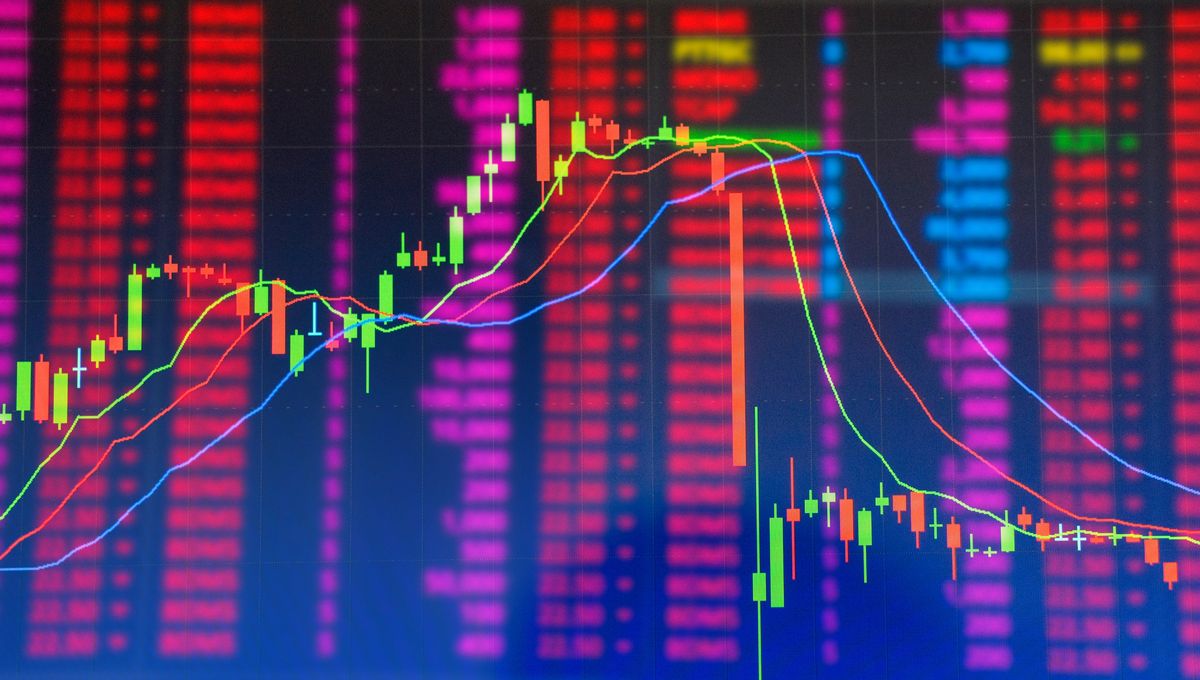
In the volatile world of cryptocurrencies, crashes are common. However, one of the largest was not just a random event, new research indicates, nor a result of the inherent instability of a product without underlying value. Instead, a handful of apparently coordinated individuals brought two of the largest digital coins down. The identities of this rogue crew are unknown, but their coordination left a mathematical trace.
In April-May 2022, the stablecoin TerraUSD and the associated cryptocurrency LUNA went from valuations of $3.5 billion to almost nothing within days, as a result of extensive short-selling. Something like this was not supposed to happen to a major stablecoin, which as the name suggests are intended to be a safe haven against the volatility of cryptocurrencies.
The final cause of the crash was a panic where holders of Terra USD and LUNA became spooked by falling values and dashed for the exits, setting off a panic resembling stock market crashes and bank runs. However, it is what happened before the crash that interested Dr Richard Clegg of Queen Mary University and colleagues.
Clegg’s team applied a method for investigating complex systems, known as temporal multilayer graph analysis, to the trades in TerraUSD and LUNA. They broadened their study to include four other cryptocurrencies over the same period. The authors found that a series of large trades were made in TerraUSD and LUNA with timing that is very unlikely to be random, undermining the value of the linked pair, and sparking the panic.
“What we found was extraordinary,” Clegg said in a statement. “On the days leading up to the collapse, we observed highly unnatural trading patterns. Instead of the usual spread of transactions across hundreds of traders, we saw a handful of individuals controlling almost the entire market. These patterns are the smoking gun evidencing of a deliberate attempt to destabilise the system.” Meanwhile, trades in the comparable coins were much more normal.
The suspicious activity took place on April 3 and 19, 2022. It’s visible despite the fact the authors did not have access to the data from the LUNA/Terra ecosystem directly, instead relying on so-called “wrapped” transactions.
Suspicious as the timing is, it’s possible to imagine a situation where several people with deep pockets and an appetite for risk independently came to the conclusion that TerraUSD might crash, and decided to bet on the outcome. However, if that had occurred the size of each person’s bets would have varied. Instead, the authors found the shares of each were almost identical. Whoever was behind the crash must have got together and each agreed to put the same amount into trying to bring the coin down.
Such coordination was probably essential. TerraUSD had large enough reserves that it could have ridden out the short selling of any of the participants alone, keeping its peg and avoiding sparking panic. Only someone with immense amounts of money to bet would have risked shorting in this way without the confidence of having others sharing the burden.
Unless any laws were broken, finding the patterns three years later might not interest regulators much. However, the team built a software system specifically to conduct analysis like this, and it could be used in close to real time.
“Cryptocurrencies are often seen as the wild west of finance, with little oversight and even less accountability,” Clegg said. “Our work shows that by applying rigorous mathematical techniques, we can uncover the hidden patterns and behaviours that drive these markets. This isn’t just about understanding what went wrong in the past – it’s about building a safer, more transparent financial system for the future.”
The same software could be used for tracking many other complex systems, potentially mitigating risk and identifying interventions that in some cases may be criminal.
Cryptocurrencies were originally promoted as a payments system, both to circumvent expensive exchange rate transactions and to facilitate untraceable purchases. However, their popularity as speculative investments undermined those uses, because the wild swings in valuation made sellers reluctant to take a currency whose value could crash before they could exchange it.
Stablecoins were hailed as the solution. Their value is pegged to an established currency, such as the US dollar, whose value will normally fluctuate much less. However, such pegging relies on reserves sufficient to resist efforts to short the stablecoin, betting its value will fall relative to the currency it is pegged to. Stablecoins often have associated cryptocurrencies whose values are linked through complex formulae, as was the case with TerraUSD and LUNA.
A loss of $3.5 billion looks small compared to the carnage on more conventional markets over the last few days, but the LUNA-Terra crash contributed to, and may have caused, the failure of FTX. That brought about losses thought to be at least 10 times the size. The crash was associated with a fall in the price of Bitcoin, but the original cryptocurrency subsequently recovered to reach even greater heights, while LUNA and TerraUSD never did.
With the two shorted currencies having their values reduced to almost zero, participants in the scheme would have made about as much as they could have hoped. It’s hard to imagine they will all see this as a one-and-done project, rather than waiting for their chance to bring other speculative markets down.
The study is published open access in ACM Transactions On The Web.
Source Link: A $3.5 Billion Cryptocurrency Collapse Was Preceded By Suspicious Mathematical Patterns